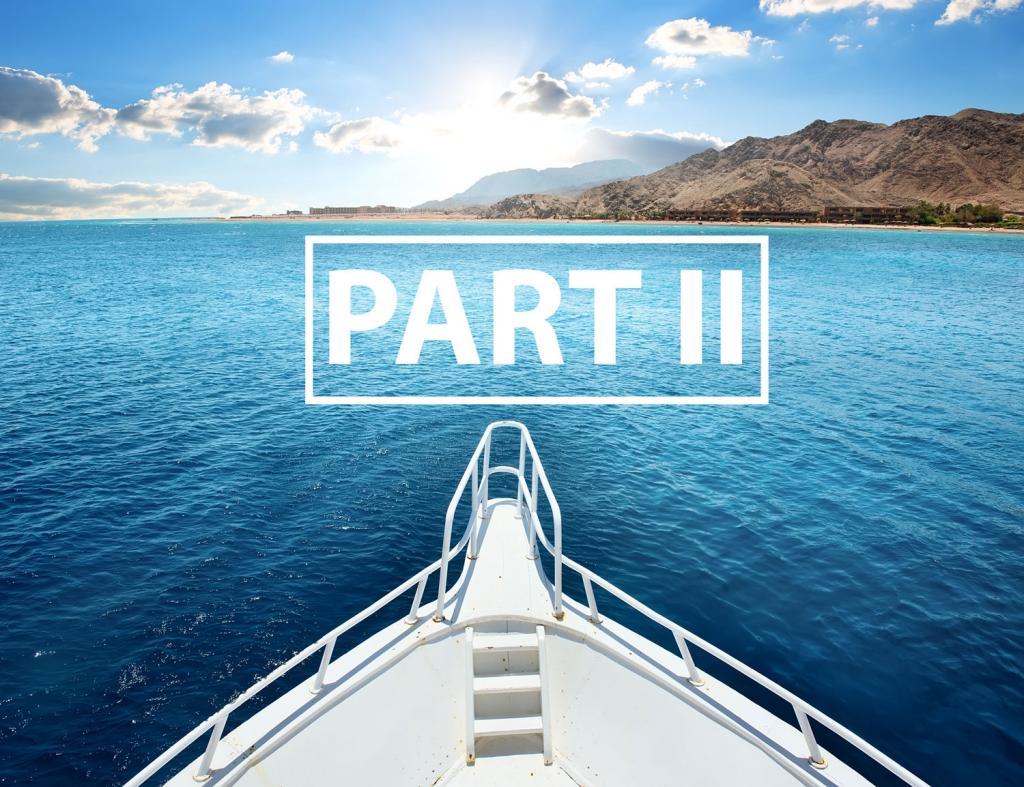Top Liveaboards for Advanced Divers - Part 2
September 16, 2021
Liveaboards are the best way to explore far-flung dive destinations and immerse yourself in diving. As an advanced diver, you have numerous liveaboard destinations to choose from, offering bucket-list marine life encounters and jaw-dropping landscapes. Read on for Part 2 of our series about top liveaboard destinations for advanced divers and plan your next adventure.
Top liveaboards for advanced divers.
5. Malaysia.
Why go there:
Diving in Malaysia is known for its exceptionally rich waters, hosting around 600 coral species and 1200 species of fish. This country’s many islands are perfect for advanced divers who want to experience world-class island diving and
visit the world’s number one dive site: Sipadan Island.
Where to dive:
Formed by living corals growing on a volcano,
Sipadan Island is renowned for its excellent scuba diving and has deep nutrient-rich waters that attract diverse pelagics.
There are numerous sea turtles in Sipadan’s bright blue waters, plus huge schools of barracuda, reef sharks, and stunning coral gardens. It is no surprise that
Jacques Cousteau once described Sipadan as "an untouched piece of art".
Nearby
Mabul Island is also impressive and is ideal for macro diving. There are plenty of prized critters to find, including abundant frogfish, ghost pipefish, nudibranchs, and more.
Complete your tour of Malaysia’s best island dive spots by visiting
Kapalai Island. The shallow dive sites around the island have plenty of light and are ideal for practicing underwater photography. You can also dive with rare mandarinfish there.
When to go:
- Sipadan, Mabul and Kapalai can be dived year-round.
- Visit Sipadan during August for nesting sea turtles.
- December to April offer the calmest sea conditions.
Liveaboards in Malaysia:
There is one liveaboard permitted to dive at Sipadan Island. You can also explore the islands by day-boat diving from
Malaysia Training Centers and resorts.
GO OFF THE BEATEN PATH & EXPLORE PENINSULAR MALAYSIA.
6. Australia.
Why go there:
Diving in Australia is synonymous with the Great Barrier Reef, and you can certainly enjoy spectacular liveaboard diving there. If you want an adventure with a difference, visit North-Western Australia. You will be rewarded with diving at Australia’s best-kept secret destination.
Where to dive:
Lying 300km off the northwest coast of Broome and perched on the continental shelf, 3 pear-shaped atolls rise out of the Indian Ocean. Known as
Rowley Shoals, these remote atolls offer outstanding diving with abundant reef and pelagic life.
Only accessible for 3 to 4 months of the year, there are few divers in the water at Rowley Shoals and the
azure waters stretch to the empty horizon. Only around 200 lucky people get to dive there each year.
With a 5-meter tidal range, you can enjoy fast-paced drift dives (and drift snorkeling) through coral-covered channels at Rowley Shoals. There are also a variety of breath-taking inner and outer reef dives that meet every experience level.
Mackerel, tuna, trevally and sharks patrol the atoll walls, and the outer reefs host huge gorgonians, sailfish, and humpback whales.
If that does not suit your needs, head to Cairns and go liveaboard diving in the far northern reaches of the
Great Barrier Reef. It is an equally untouched and remote place to dive.
Raine Island in the far north offers excellent diving and is the
largest green sea turtle nesting site in the world. More than 64,000 sea turtles have been spotted there in one nesting season alone.
When to go:
- Rowley Shoals can be dived from September to December.
- The Great Barrier Reef can be dived year-round.
- Raine Island turtle nesting season is from November to March.
Liveaboards in Australia:
There is one diving liveaboard that visits Rowley Shoals and there are numerous
Great Barrier Reef Training Centers and liveaboards to choose from.
DISCOVER MORE GREAT PLACES TO GO DIVING IN AUSTRALIA.
7. The Federated States of Micronesia.
Why go there:
The
Diving in Micronesia is exceptional and diverse, with over 600 tiny islands scattered across the western Pacific Ocean. It is one of the best-known liveaboard diving destinations for
WWII wrecks, manta ray dives, jaw-dropping reefs and countless sheer walls.
Where to dive:
With so many islands to choose from, liveaboard diving is the best way to explore Micronesia’s many underwater wonders. Go
diving at Yap and you can explore numerous WWII wrecks and encounter plenty of manta rays.
Palau diving offers a little bit of everything, including exciting open ocean dives with big pelagics and easy-going reefs.
Explore the impressive 143-meter-long Iro Maru wreck, swim in a jellyfish lake, delve into cave systems full of stalactites, and dive with mantas.
To immerse yourself in wreck diving, go
diving in Truk Lagoon. This old Japanese naval base in WWII has dozens of wrecks, all sitting in calm lagoon waters that provide easy conditions and great visibility year-round.
Whether you want to dive among coral-covered tanks, submarines, airplanes, or ships, you can. To make the most of your dives at Truk Lagoon, get your
SSI Wreck Diving and
SSI Enriched Air Nitrox certifications before you visit.
If you are looking for peaceful diving far from daily life, Kosrae and Pohnpei are ideal for you.
Kosrae’s secluded dive sites are all about drifting over light-filled hard coral gardens, whilst
Pohnpei is a nature lover’s paradise.
Pohnpei Island is famous for its
huge megalithic structures and has
numerous grey reef sharks, mantas, and pristine coral reefs below the waterline.
When to go:
- You can go diving in Micronesia all year.
- Seasonal conditions vary at each location.
- Check with your preferred Micronesia liveaboard
Liveaboards in Micronesia:
There are numerous liveaboards to choose from in Micronesia, offering a variety of safaris aboard modern luxurious vessels.
READ MORE: EXPERIENCED DIVERS - 8 BEST PLACES TO SCUBA DIVE.
